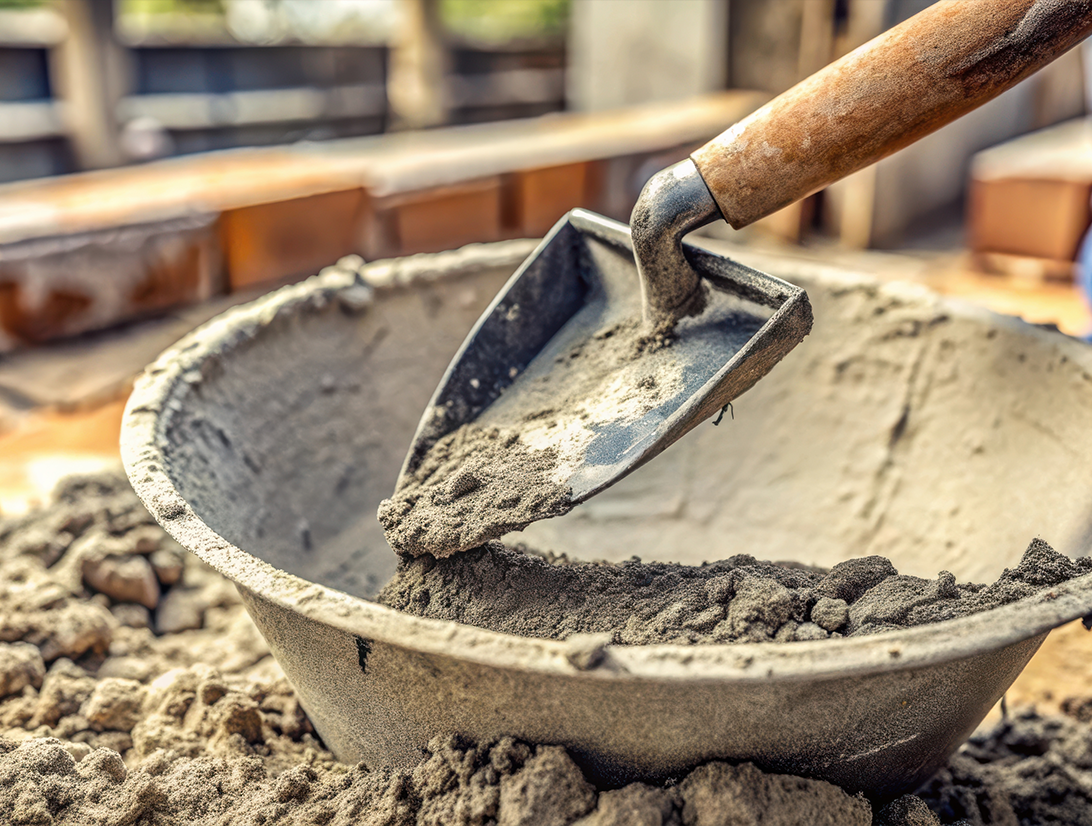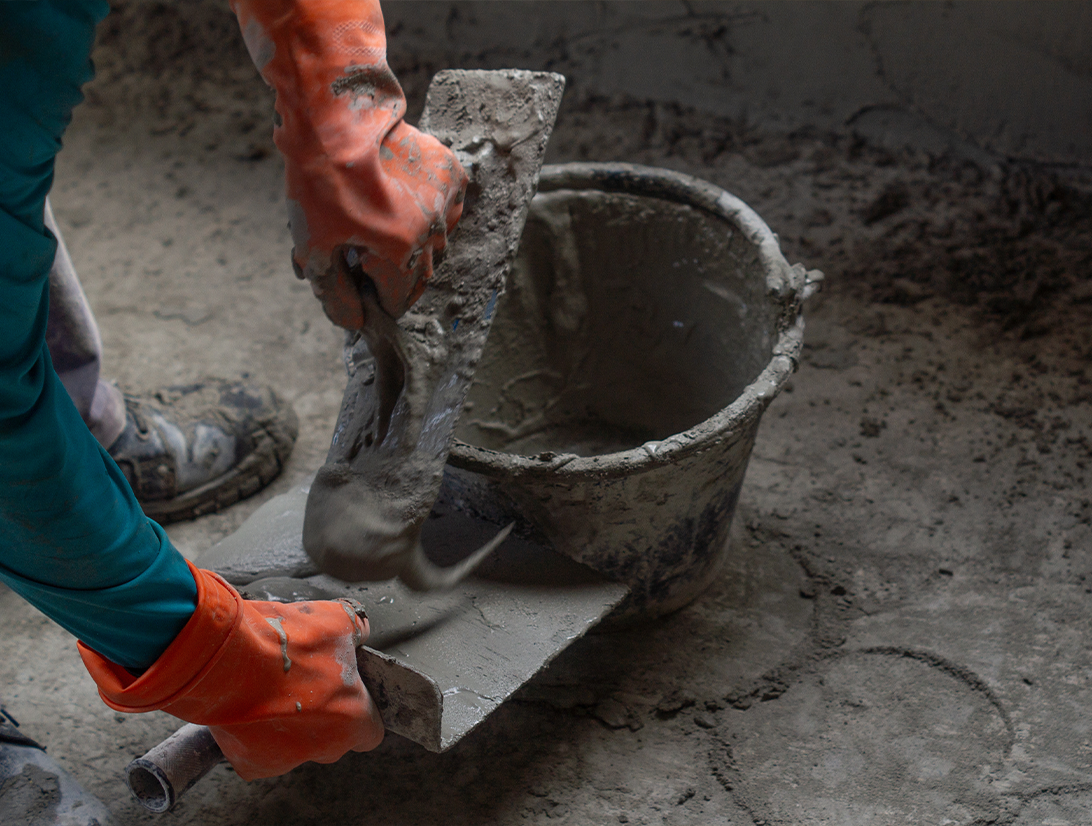5 mistakes to avoid when using concrete test scoop

At first glance, concrete testing scoops look easy to use. As is often said, looks are deceiving. Get to work with your scooper and you'll find it is more complicated than it appears on the surface. Moreover, if you use your concrete testing scoop with regularity and problems will inevitably arise.
Most such problems result from user error as opposed to product design. The weather and other factors also play a role. This is your inside look at the top mistakes to avoid when using a concrete test scoop.
Concrete Testing Scoop Mistake #1: Inadequate Preparation


The efficiency and success of your project largely hinges on preparation. Take your time, beginning with a cleaning of the cone and baseplate prior to testing the interior and exterior. A light shaking of the scooper to loosen particle remnants will not suffice.
The best way to perform the scooper cleaning is with water from a hose. If there is any excess remaining, remove it with a damp cloth, wiping the inner surface, guaranteeing the concrete doesn’t adhere to the base or cone.
If there is water on the cone’s surface or base, do not use the concrete testing scoop. The scooper should be completely dry. If necessary, wipe the scooper’s interior with a rag or towel. Once you are completely certain there is no residual water or moisture remaining on the base or surface after a thorough washing, you can use the concrete testing scoop in full confidence.
Preparation for use also includes concrete mix testing. Be sure to sample the mix to test it. The aggregate should not surpass 40mm. Ideally, the concrete mix test will be conducted within three minutes of beginning the slump test.
Concrete Testing Scoop Mistake #2: Assuming the Concrete Testing Scoop is all That is Necessary
The concrete testing scoop won’t get the job done alone. The scoop should be used with a slump cone, tamping bar and base plate. Slump cones are exactly as they sound: molds in cone shape consisting of plastic or steel that typically measure 8” in diameter along the base, 12” in height and 4” in diameter at the top.
The tamping rod is used during the testing process to gauge the slump with a recording of the length the concrete stretches from the rod at the slump cone’s top. The tamping rod compacts the concrete.
The slump cone rests atop a base plate for testing. The best base plates have bolt-on clamps that keep the cone as steady as possible while testing. Ideally, the base plate will have a handle attached for easy removal. It will also help to have measuring tape on-hand to measure the slump. Moreover, it is prudent to have an aluminum funnel for filling and a trowel for similar purposes before beginning.
The Deslauriers Concrete Test Scoop is expertly designed yet it takes some elbow grease to use properly. However, there’s no reason to be intimidated.
You’ll be scooping and pouring concrete in little time thanks to the deep round bottom. Both cast aluminum and stainless steel options are available.
Concrete Testing Scoop Mistake #3: Choosing the Wrong Scoop for the Job
The Deslauriers Concrete Test Scoop is engineered for accurate and efficient use, but selecting the wrong type of scoop—or not using it properly—can compromise your testing results. Not all scoops are created equal, and understanding the differences matters.
Deslauriers offers both cast aluminum and stainless steel versions of the scoop. The aluminum scoop is lighter, making it ideal for repetitive use and easier handling, especially when working in tight conditions or for extended periods. The stainless steel version, on the other hand, is heavier but offers enhanced durability and longevity, making it better suited for rugged job sites or high-volume testing environments.
Beyond materials, technique plays a role too. The scoop’s deep round bottom is designed to contain and pour concrete cleanly, but improper handling—such as uneven scooping or careless pouring—can result in inconsistent fills or contamination. To get the most accurate slump or strength test, choose the right scoop for your workflow and use it with intention: scoop steadily, maintain balance, and pour with control.
Picking the right scoop isn’t just about preference—it’s about ensuring precision and consistency in your concrete testing process.
Concrete Testing Scoop Mistake #4: Rushing the Project
Concrete and grout testing with our Concrete Test Scoop requires strategy, patience and intelligence. Take your time, ensuring there is a flat surface for stability. The cone will remain firmly in the baseplate if you apply pressure along the metal tabs.
When in doubt, err on the side of caution. Verify that the cone is in the proper position within the baseplate before moving forward with use.
Concrete Testing Scoop Mistake #5: Failing to Inspect, Clean and Maintain the Scoop


Repeated use of your concrete testing scooper eventually necessitates some adjustments. However, you probably won't have to replace the scooper if you choose our durable concrete scoop. Deslauriers' design team and engineers went to great lengths to design this concrete testing scooper with the user experience squarely in mind.
The scooper should be inspected, cleaned and maintained with regularity. Regular inspections pinpoint problems prior to the point that they compromise the integrity of test results. When in doubt, abide by the American Concrete Institute’s guidelines for in-depth instructions pertaining to scoop inspection. At the bare minimum, give the scooper a once-over after each use to verify it is sufficiently clean and void of leftover particles, debris and other gunk. The cleaner the scoop, the better it will function the next time you need it.
Conduct a slump test and compare the results with anticipated values. If there is a significant difference between the slump’s measured value and the range you initially anticipated, there is a problem.
Such discrepancy indicates the measurement is not accurate, meaning scoop cleaning or maintenance will be necessary. When in doubt, err on the side of caution, cleaning and maintaining the scoop at a regular frequency, ideally after each use.
Deslauriers has the Concrete Testing Scoop You Need
Our Concrete Test Scoop is the industry’s leading concrete testing scooper. This masonry tool is perfect for concrete and grout testing. The scoop’s ergonomic design facilitates scooping and pouring with ease. The scooper’s reliable design also makes it easier to use than a shovel. The scoop has a filling capacity of ½ a cubic foot of material, meaning it is highly efficient and user-friendly.
We also invite you to check out our related testing equipment that pairs to perfection with our concrete testing scoop. Our slump cones, tamping rods and base plates complement the scoop for efficient project completion. You can also take a look at our other jobsite products including patch caps, mini hoppers, scaffold clips and more.
If you have any questions or concerns about using the scoop or other jobsite products, consider our product training and education guidance program. We offer free onsite training to help you get the job done right every single time without exception.
Contact Deslauriers Today
Feel free to contact us on the internet for prompt assistance. You can also reach Deslauriers by phone at 800-743-4106.
If you prefer to coordinate a no-cost onsite training presentation at your preferred location, we can do that as well. All you have to do is reach out to Thor Moody for assistance. You can reach Thor by email at tmoody@deslinc.com or by phone at 813-469-3535.
Give us a call or shoot us an email and we'll coordinate a training presentation specific to your business and its unique projects.
- Impalement Protection with OSHA-Compliant Rebar Caps
- Protecting Worksites from Dropped Object Hazards: Essential Tools for Elevated Safety
- 5 Ways to Use the Vers-A-Scoop (Beyond Just Masonry Work)
- Deslauriers: Leading the Way in Sustainable Manufacturing
- 5 mistakes to avoid when using concrete test scoop
- Construction materials
- shims
- shims in construction
- concrete
- construction
- Steel columns
- Building support structures
- Structural design
- Types of steel columns
- H-beams
- I-beams
- Pipe columns
- Box columns
- Steel-concrete composite columns
- Construction projects.
- Concrete Column Form
- Concrete Column Form Rent
- Buy Concrete Column Forms
- Construction temperature control
- Thermostatic technology
- Concrete curing
- Temperature regulation
- Construction equipment
- Advanced curing techniques
- Concrete strength optimization
- Structural integrity
- Construction safety
- Composite wood shims
- construction shims
- durability of composite shims
- Lifting Handle Guide
- Lifting Handle best practices
- Dowel Caps
- Concrete Placement in Construction
- Construction Efficiency
- Concrete Placement in Construction Projects
- sustainable construction
- cost-effective building materials
- sustainable building benefits
- environmental impact
- on-site training
- deslauriers services
- construction training
- Equipment Maintenance
- Testing Equipment Care
- Rust Prevention
- Compression Testing Equipment
- Equipment longevity
- column formwork
- concrete formwork

